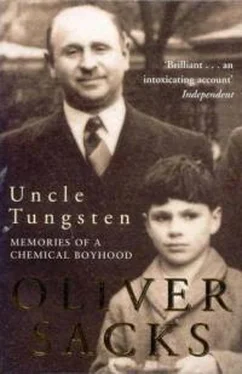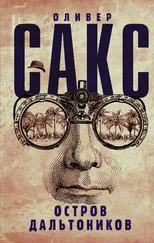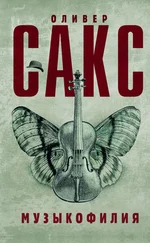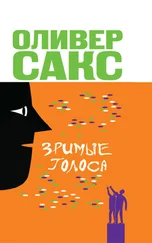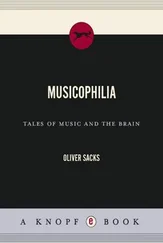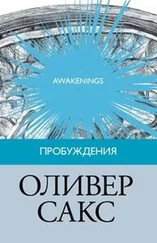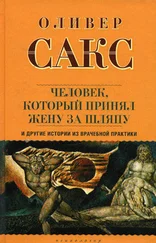Up on the top floor was a colossal cluster of stibnite – glossy black, spearlike prisms of antimony sulfide. I had seen antimony sulfide as an unremarkable black powder in Uncle Dave’s lab, but here I saw it in crystals five or six feet high. I worshiped these prisms; they became for me a sort of totem or fetish. These fabulous crystals, the largest of their sort in the world, had come from the Ichinokawa Mine, the legend said, on Shikoku Island, in Japan. When I grew up, I thought, when I was able to travel, I would pay a visit to this island, pay my respects to the god. Stibnite is found in many places, I subsequently learned, but that first sight joined it indissolubly with Japan in my mind, so that Japan, ever afterwards, was for me the Land of Stibnite. Australia, similarly, became the Land of Opal, no less than the Land of the Kangaroo and the Platypus.
There was a great mass of galena in the museum too – it must have weighed over a ton – which had formed in gleaming dark grey cubes five or six inches across that often had smaller cubes embedded in them. These in turn, I could see by peering through my hand lens, had yet smaller cubes seemingly growing out of them. When I mentioned this to Uncle Dave, he said that galena was cubic through and through, and that if I could look at it magnified a million times, I would still see cubes, and smaller cubes attached to these. The shape of the galena cubes, of all crystals, Uncle said, was an expression of the way their atoms were arranged, the fixed, three-dimensional patterns or lattices they formed. This was because of the bonds between them, he said, bonds that were electrostatic in nature, and the actual arrangement of atoms in a crystal lattice reflected the closest packing that the attractions and repulsions between the atoms would allow. That a crystal was built from the repetition of innumerable identical lattices – that it was, in effect, a single giant self-replicating lattice – seemed marvelous to me. Crystals were like colossal microscopes that allowed one to see the actual configuration of the atoms inside them. I could almost see, in my mind’s eye, the lead atoms and the sulphur atoms composing the galena – I imagined them vibrating slightly with electrical energy, but otherwise firmly held in position, joined to one another now, coordinated in an infinite cubic lattice.
I had visions (especially after listening to stories of my uncles in their prospecting days) of being a sort of boy geologist myself, armed with chisel and hammer and collecting bags for my trophies, coming upon never-before-described mineral species. I did try a little prospecting in our garden, but found little beyond odd chips of marble and flint. I longed to go out on geological excursions, to see the patterns of the rocks, the richness of the mineral world, for myself. This desire was fanned by my reading, not only accounts of the great naturalists and explorers but also more modest books that came to hand, such as Dana’s little book The Geological Story , with its beautiful illustrations, and my favorite nineteenth-century Playbook of Metahj which was subtitled Personal Narratives of Visits to Coal, Lead, Copper and Tin Mines . I wanted to visit different mines myself, and not just the copper and lead and tin mines in England, but the gold and diamond mines which had drawn my uncles to Africa. But failing this, the museum could provide a microcosm of the world – compact, attractive, a distillation of the experience of innumerable collectors and explorers, their material treasures, their reflections and thoughts.
I would devour the information provided in the legends for each display. Among the delights of mineralogy were the beautiful and often ancient terms used. Vug , Uncle Dave told me, was a term used by the old tin miners of Cornwall, and came from the Cornish dialect word vooga (or fouga ), meaning an underground chamber; ultimately this came from the Latin fovea , a pit. It intrigued me to think that this funny, ugly word bore testament to the antiquity of mining, to the Romans’ first colonization of England, drawn by the tin mines of Cornwall. The very name for tin ore, cassiterite, came from the Cassiterides, the ‘Tin Isles’ of the Romans.
The names of minerals especially fascinated me – their sounds, their associations, the sense they gave of people and places. The older names gave one a sense of antiquity and alchemy: corundum and galena, orpiment and realgar. (Orpiment and realgar, two arsenic sulphides, went euphoniously together, and made me think of an operatic couple, like Tristan and Isolde.) There was pyrites, fool’s gold, in brassy, metallic cubes, and chalcedony and ruby and sapphire and spinel. Zircon sounded oriental, calomel Greek – its honeylike sweetness, its ‘mel’, belied by its poisonness. There was the medieval-sounding sal ammoniac. There was cinnabar, the heavy red sulphide of mercury, and massicot and minium, the twin oxides of lead.
Then there were minerals named after people. One of the most common minerals, much of the redness of the world, was the hydrated iron oxide called goethite. Was this named in honor of Goethe, or did he discover it? I had read that he had a passion for mineralogy and chemistry. Many minerals were named after chemists – gay-lussite, scheelite, berzelianite, bunsenite, liebigite, crookesite, and the beautiful, prismatic ‘ruby-silver’, proustite. There was samarskite, named after a mining engineer. Colonel Samarski. There were other names that were evocative in a more topical way: stolzite, a lead tungstate, and scholzite, too. Who were Stolz and Scholz? Their names seemed very Prussian to me, and this, just after the war, evoked an anti-German feeling. I imagined Stolz and Scholz as Nazi officers with barking voices, sword sticks, and monocles.
Other names appealed to me simply for their sound or for the images they conjured up. I loved classical words and their depiction of simple properties – the crystal forms, colors, shapes, and optics of minerals – like diaspore and anastase and microlite and polycrase. A great favorite was cryolite – ice stone, from Greenland, so low in refractive index that it was transparent, almost ghostly, and, like ice, became invisible in water. [5] Cryolite was the chief mineral in a vast pegmatitic mass in Ivigtut, Greenland, and this ore was mined continuously for more than a century. The miners, who had sailed from Denmark, would sometimes take boulders of the transparent cryolite to use as anchors for their boats, and never quite got used to the way in which these vanished, became invisible, the instant they sank below the surface of the water.
Many elements had been given names from folklore or mythology, sometimes revealing a little of their history. A kobold was a goblin or evil sprite, a nickel a devil; both were terms used by Saxon miners when cobalt and nickel ores proved treacherous, and did not yield what they should. Tantalum brought up visions of Tantalus tantalized in Hell by water that retreated from him whenever he bent down to drink from it; the element was given its name, I read, because its oxide was unable to ‘drink water’, that is, to dissolve in acids. Niobium was named after Tantalus’ daughter, Niobe, because the two elements were always found together.
(My 1860ish books included a third element, pelopium, in this family – Pelops was Tantalus’ son, whom he cooked and served up to the gods – but the existence of this was later disproved.)
Other elements had astronomical names. There was uranium, discovered in the eighteenth century and named after the planet Uranus; and a few years later, palladium and cerium, named after the recently discovered asteroids Pallas and Ceres. Tellurium had a fine, earthy Greek name, and it was only natural that when its lighter analog was found, it should be named selenium, after the moon. [6] In addition to the hundred-odd names of existing elements, there were at least twice that number for elements that never made it, elements imagined or claimed to exist on the basis of unique chemical or spectroscopic characteristics, but later found to be known elements or mixtures. Many were place names, often exotic, discarded because the elements turned out to be spurious: ‘florentium’, ‘moldavium’, ‘norwegium,’ and ‘helvetium’, ‘austrium’ and ‘russium’, ‘illinium’, ‘virginium,’ and ‘alabamine,’ and the splendidly named ‘bohemium.’ I was oddly moved by these fictional elements and their names, especially the starry ones. The most beautiful, to my ears, were ‘aldebaranium’ and ‘cassiopeium’ (Auer’s names for elements that actually existed, ytterbium and lutecium) and ‘denebium,’ for a mythical rare earth. There had been a ‘cosmium’ and ‘neutronium’ (‘element o’), too, to say nothing of ‘archonium’, ‘asterium’, ‘aetherium,’ and the Ur-element ‘anodium,’ from which all the other elements supposedly were built. There were sometimes competing names for new discoveries. Andres del Rio discovered vanadium in Mexico in 1800 and named it ‘panchromium’ for the variety of its many-colored salts. But other chemists doubted his discovery, and he eventually gave up his claim, and the element was only rediscovered and renamed thirty years later by a Swedish chemist, this time in honor of Vanadis, the Norse goddess of beauty. Other obsolete or discredited names also referred to actual elements: thus the magnificent ‘jargonium,’ an element supposedly present in zircons and zirconium ores, was most probably the real element hafnium.
Читать дальше
